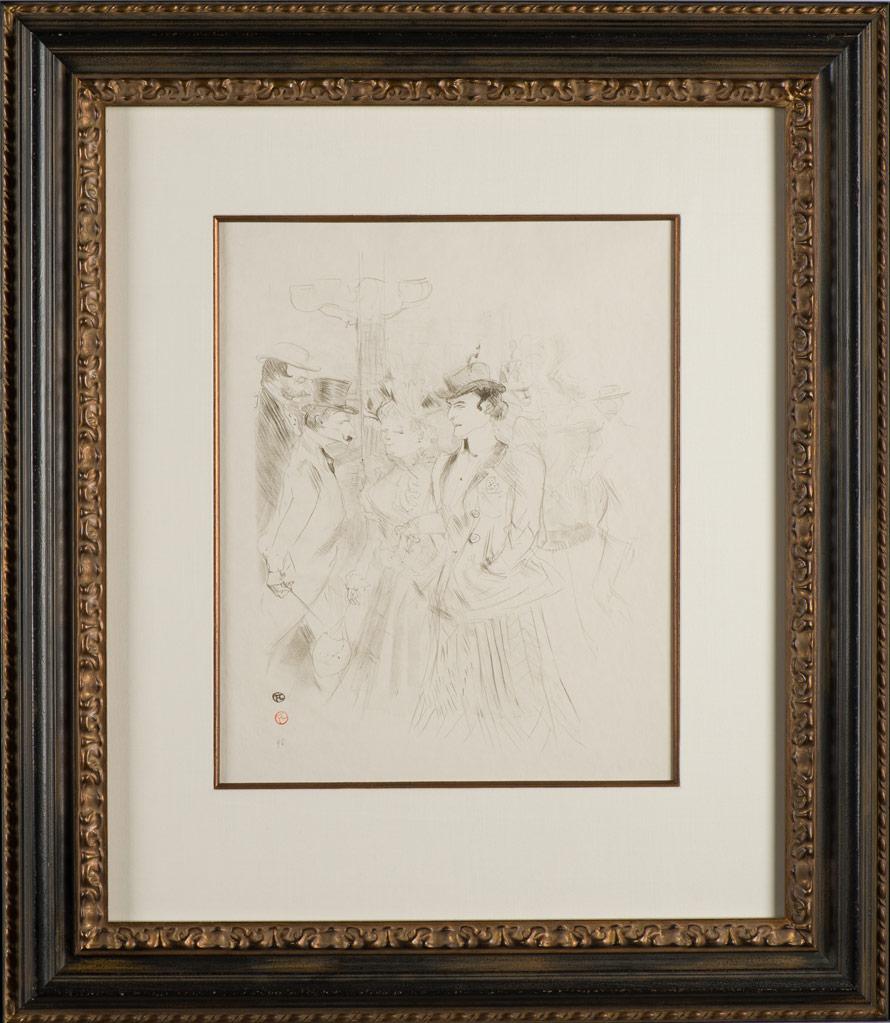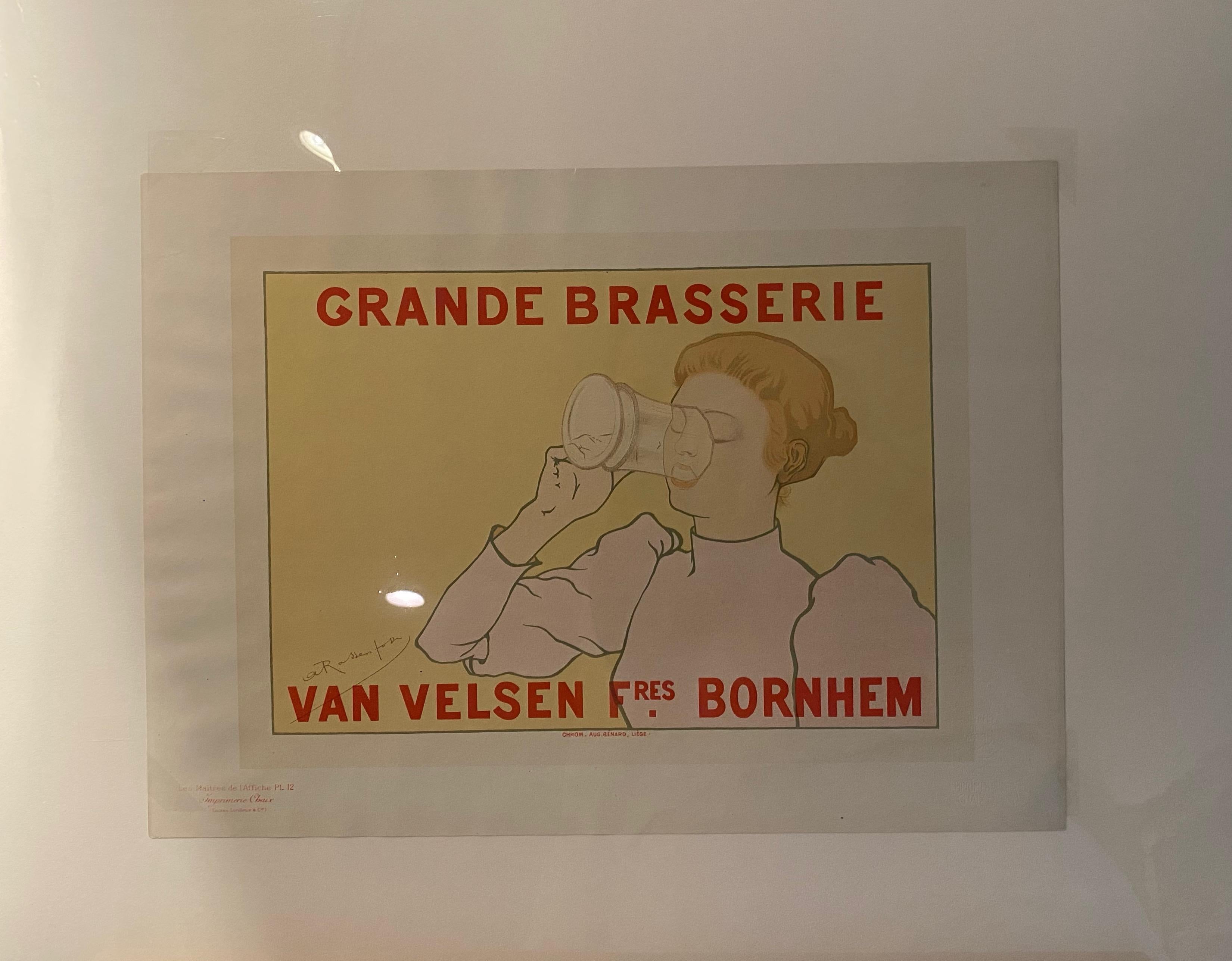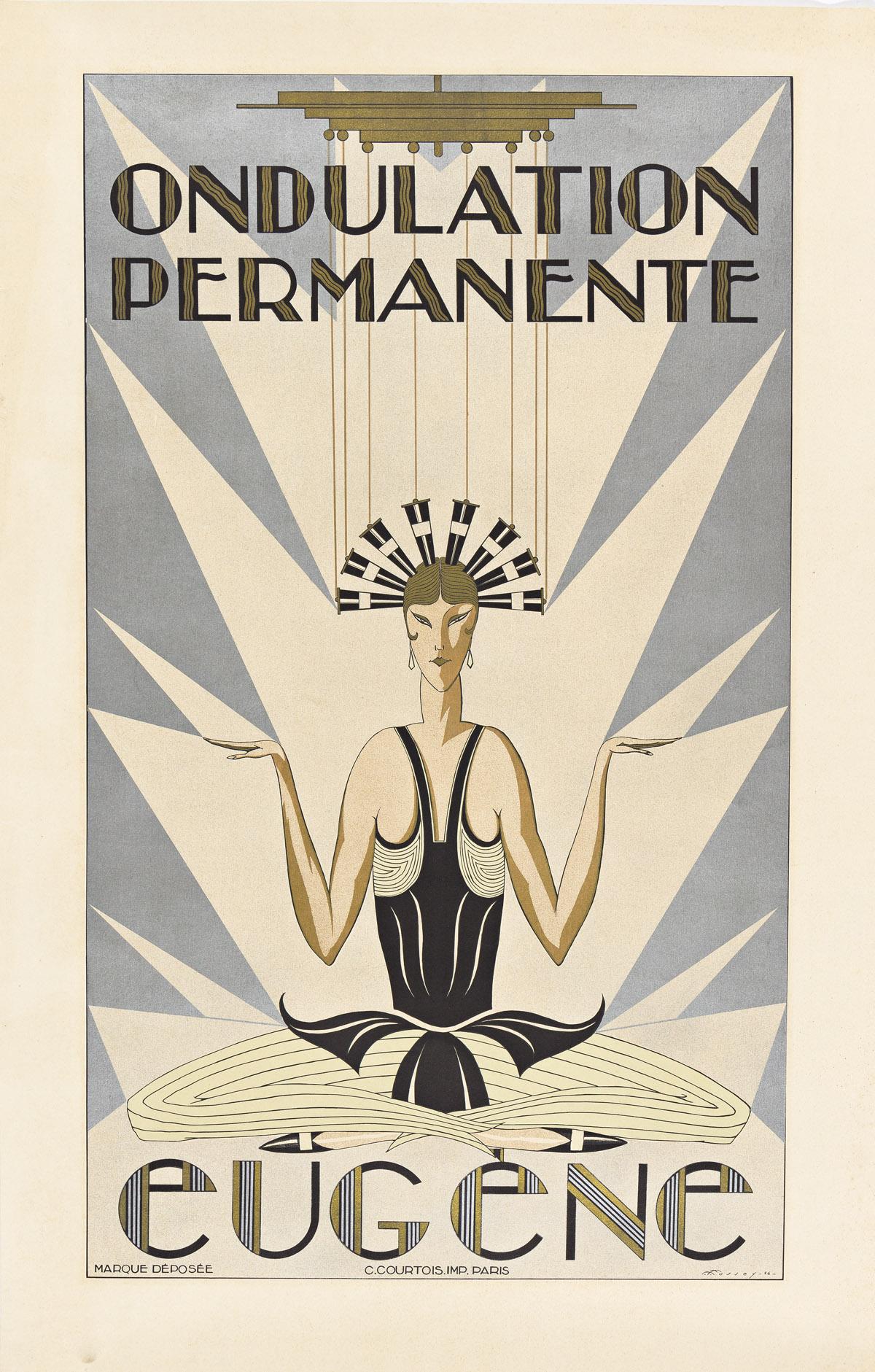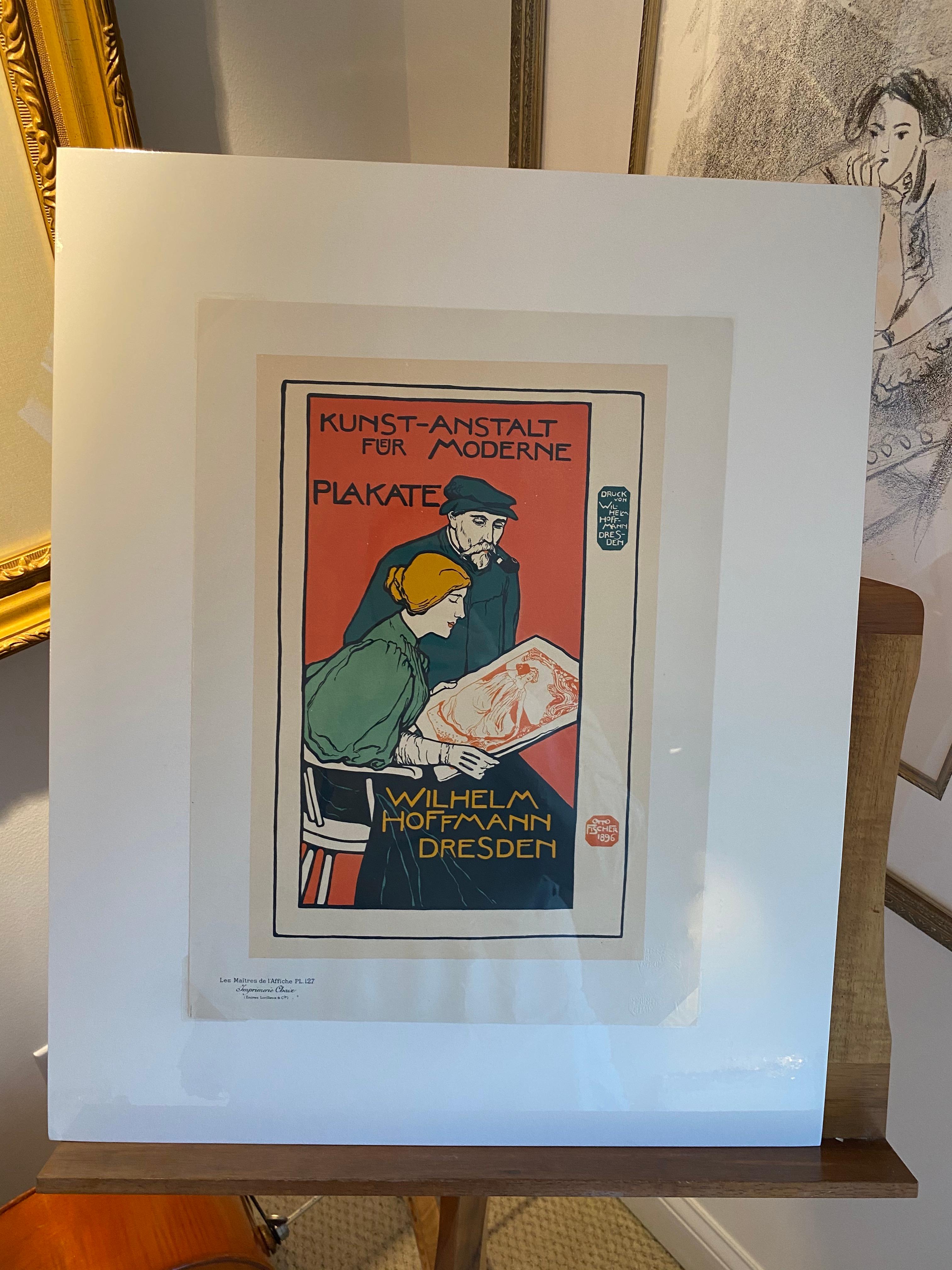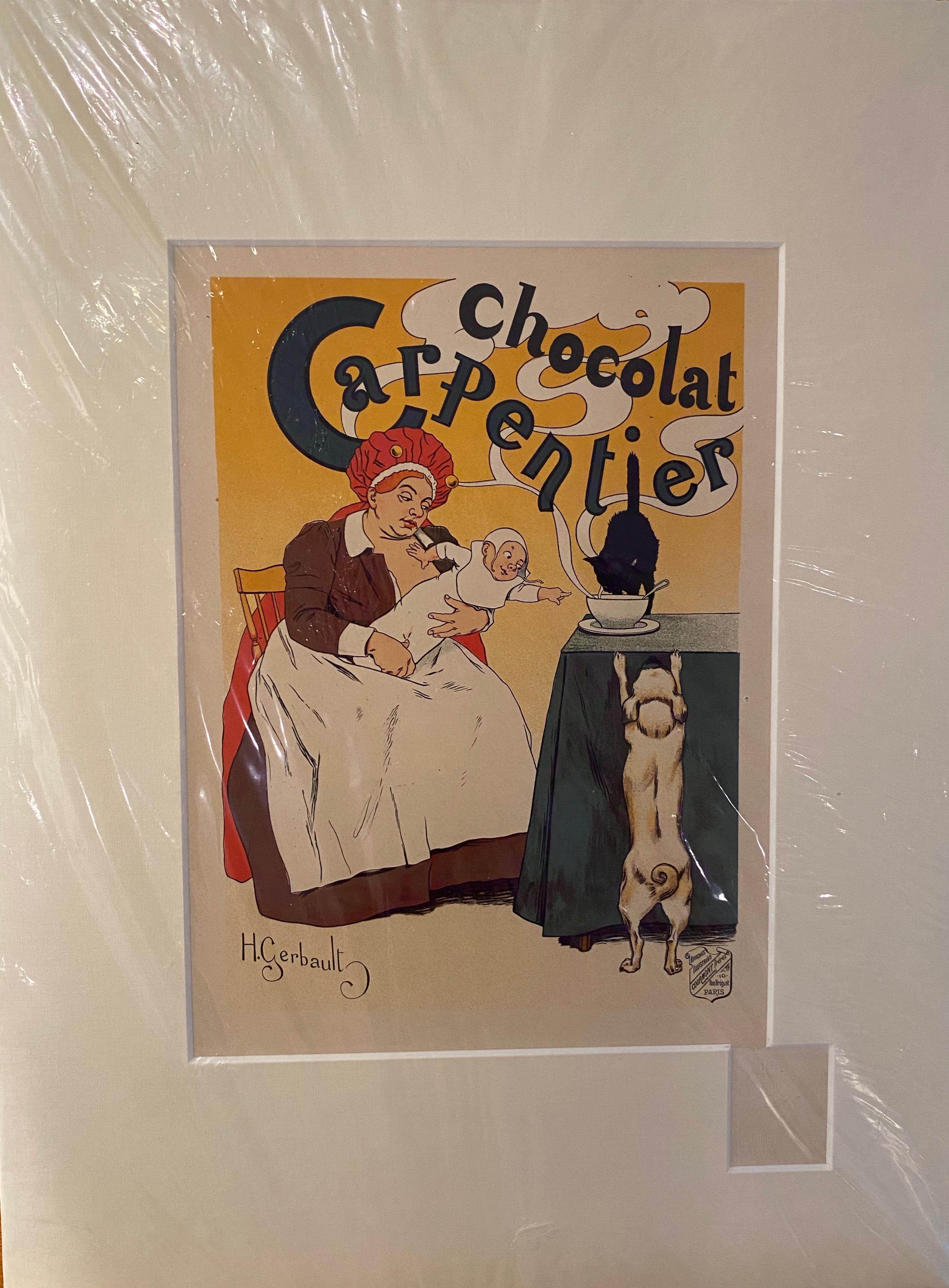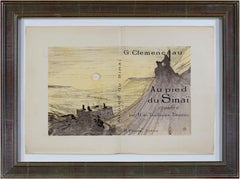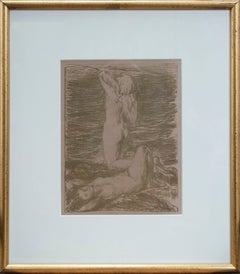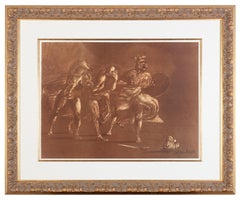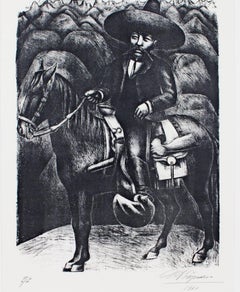
Zapata E/E
View Similar Items
Want more images or videos?
Request additional images or videos from the seller
1 of 10
David SiquierosZapata E/E1930
1930
About the Item
- Creator:David Siquieros (1896 - 1974, Mexican)
- Creation Year:1930
- Dimensions:Height: 30.5 in (77.47 cm)Width: 25.125 in (63.82 cm)
- Medium:
- Period:
- Condition:
- Gallery Location:Milwaukee, WI
- Reference Number:Seller: 397d1stDibs: LU60532606411
About the Seller
4.9
Platinum Seller
These expertly vetted sellers are 1stDibs' most experienced sellers and are rated highest by our customers.
Established in 1966
1stDibs seller since 2017
391 sales on 1stDibs
Typical response time: 1 hour
More From This SellerView All
- Toulouse Lautrec Original Lithograph Famous Political 1800s Collection SignedBy Henri de Toulouse-LautrecLocated in Milwaukee, WI"Lautrec Book: From Au Pied du Sinai written by Georges Clemenceau" lithographs created by the legendary Henri de Toulouse-Lautrec. This book, Au Pied...Category
1890s Post-Impressionist Figurative Prints
MaterialsLithograph, Mulberry Paper
- 'Two Nudes at the Beach' Original Lithograph in SepiaLocated in Milwaukee, WIOriginal Lithograph in Sepia Art: 8-1/2 x 6-1/2Category
Late 19th Century Figurative Prints
MaterialsLithograph
- Homage a Leonardo d' Vinci (Three Figures Advancing from De La Bataille Vol. I)By Claude WeisbuchLocated in Milwaukee, WIArt: 17" x 23 1/4" Frame: 27 5/8" x 33 7/8" Original color lithograph (VIII/L) Signed lower right. This original Weisbuch lithograph comes from th...Category
1970s Contemporary Figurative Prints
MaterialsLithograph
- "La Grande Guerre (The Great War), " Color Lithograph after Rene MagritteBy René MagritteLocated in Milwaukee, WI"La Grande Guerre (The Great War)" is a color lithograph after the 1964 painting by Rene Magritte. A Victorian lady stands in white facing the viewer. A bouq...Category
2010s Surrealist Figurative Prints
MaterialsLithograph
- "La Reconnaissance Infinie (The Infinite Recognition)" Litho after Rene MagritteBy René MagritteLocated in Milwaukee, WI"La Reconnaissance Infinie (The Infinite Recognition)" is a color lithograph after the 1963 painting by Rene Magritte. Two of Magritte's bourgeois "little men" stand in the sky. Both look away from the viewer talking to each other in the typical outfit of Magritte's men, black trench coats and bowler hats. Art: 15 x 18.25 in Frame: 26.25 x 29.88 in René-François-Ghislain Magritte was born November 21, 1898, in Lessines, Belgium and died on August 15, 1967 in Brussels. He is one of the most important surrealist artists. Through his art, Magritte creates humor and mystery with juxtapositions and shocking irregularities. Some of his hallmark motifs include the bourgeois “little man,” bowler hats, apples, hidden faces, and contradictory texts. René Magritte’s father was a tailor and his mother was a miller. Tragedy struck Magritte’s life when his mother committed suicide when he was only fourteen. Magritte and his two brothers were thereafter raised by their grandmother. Magritte studied at the Brussels Academy of Fine Arts from 1916 to 1918. After graduating he worked as a wallpaper designer and in advertisement. It was during this period that he married Georgette Berger, whom he had known since they were teenagers. In 1926, René Magritte signed a contract with the Brussels Art Gallery, which allowed him to quit his other jobs and focus completely on creating art. A year later he had his first solo show at the Galerie la Centaurie in Brussels. At this show Magritte exhibited what is today thought of as his first surrealist piece, The Lost Jockey, painted in 1926. In this work a jockey and his steed run across a theater stage, curtains parted on either side. Throughout the scene, there are trees with trunks shaped somewhat like chess pawns with musical scores running vertically up their sides and branches sticking out from all angles. Critics did not enjoy this style of art; it was new, different, and took critical thought to understand, but The Lost Jockey was only the first of many surrealist artworks Magritte would paint. Because of the bad press in Brussels, René and Georgette moved to Paris in 1927, with the hope that this center of avant-garde art would bring him success and recognition. In Paris, he was able to become friends with many other surrealists, including André Breton and Paul Éluard. They were able to learn from and inspire one another, pushing the Surrealist movement further forward. It was also in Paris that Magritte decided to add text to some of his pieces, which was one of the elements that made his artwork stand out. In 1929, he painted one of his most famous oil works: The Treachery of Images. This is the eye-catching piece centered on a pipe. Below the pipe is written “Ceci n’est pas un pipe,” which translates to “This is not a pipe.” This simple sentence upset many critics of the time, for of course it was a pipe. Magritte replied that it was not a pipe, but a representation of a pipe. One could not use this oil on canvas as a pipe, to fill it with tobacco and smoke it. Thus, it was not a pipe. In 1930, Magritte and Georgette moved back to Brussels. Though they would travel to his exhibitions elsewhere, their home going forward would always be in Brussels. Magritte had his first American exhibition at the Julien Levy Gallery in New York City in 1936 and his first show in England two years later in 1938 at The London Gallery...Category
2010s Surrealist Figurative Prints
MaterialsLithograph
- "Two Horses from Homage to Marino Marini, " an Original signed by Marino MariniBy Marino MariniLocated in Milwaukee, WI"Two Horses from Homage to Marino Marini" is an original color lithograph signed in stone by Marino Marini. It depicts a horse and rider in abstracted contour lines and black shapes ...Category
1970s Post-Modern Animal Prints
MaterialsLithograph
You May Also Like
- Sandeman Porto & Sherry – Iconic Original PosterLocated in Zurich, CHThe Don: One of the most recognizable figures in poster history ever, quietly reveling in the simple delights of a glass of ruby port – typically thought of as a horseman, clad in a ...Category
1920s Art Deco Figurative Prints
MaterialsPaper, Lithograph
- "La Vache Enragee" iconic vintage poster by Toulouse-LautrecBy Henri de Toulouse-LautrecLocated in Hinsdale, ILTOULOUSE-LAUTREC, HENRI DE (1864-1901) "LA VACHE ENRAGÉE" Wittrock P27B, Adhemar 197 Original color lithograph Wittrock’s State III of III with letters Printed on buff wove paper, c. 1896 Bears artist stamp “TL” upper right, dated 96 Image size: 22 1/2” x 23 5/8” Several examples are known where Lautrec drew on work by other artists whom he admired. In this poster there are clear references to Adolphe Willette's humorous themes and rococo style of illustration. Willette was the founder and illustrator of the short-lived monthly “La Vache Enragee”(the angry cow) edited by the cartoonist Adolphe Roedel. This colored poster of the same title was commissioned for the appearance of the magazine March 1896. As a reference to the wretched financial state of most artists, the term “manger de la vache enrage” (meaning roughly, “meaning not having enough to eat”) was adopted as the motto for the “Vachalcade”which was held on Montmarte annually from 1896. This was an artists' procession, with fanfares and allegories on fame and the muses; it also included a furious cow and a troupe of pretty girls as a satire on Europa with the bull. The event was organized by Roedel"(Adriani p.217) Toulouse-Lautrec took up lithography at a high point in its history, when technical advances in color printing and new possibilities for large scale led to a proliferation of posters as well as prints for the new bourgeois collector. In his short career, he created more than three hundred fifty prints and thirty posters, as well as lithographed theater programs...Category
1890s Art Nouveau Figurative Prints
MaterialsLithograph
- "Promenoir" by Henri de Toulouse-LautrecBy Henri de Toulouse-LautrecLocated in Hinsdale, ILTOULOUSE-LAUTREC, HENRI DE (1864-1901) PROMENOIR Delteil 290, Adhemar 324, Wittrock 315 Lithograph printed in olive black-green ink, c. 1899 Printed on japon paper, Full margi...Category
1890s Art Nouveau Figurative Prints
MaterialsLithograph
- "The Chap Book " Original lithograph from “Les Maitres de L’Affiche” seriesLocated in Hinsdale, ILBRADLEY, WILL (1868 - 1962) The Chap Book Original lithograph from “Les Maitres de L’Affiche” series Printed by Imprimerie Chaix, Paris Bearing MDL stamp lower right, from issue #34, 1898. Plate #136 Unframed Size: 11 3/8 x 15 3/4” The “Les Maitres de l’Affiche” series was offered as a subscription series to collectors every month for 60 months, from December 1895 through November 1900. The “Maitres de l’Affiche,” were issued as separate numbered sheets, referred to as “plates”. They were numbered, with the printers name “Imprimerie Chaix,” in the margin at the bottom left hand corner, “PL.1” to “PL.240.” In the margin at the bottom right hand corner of each, is a blind embossed stamp from a design of Cheret’s. The smaller format and the fact the “Maitres” were a paid subscription series, allowed Imprimerie Chaix to use the latest state of the art printing techniques, not normally used in the large format posters...Category
1890s Art Nouveau Figurative Prints
MaterialsLithograph
- "Grande Brasserie Van Velsen" from "Les Maitres de L'Affiche" seriesBy Armand RassenfosseLocated in Hinsdale, ILRASSENFOSSE, ARMAND (1862 – 1934) "Grande Brasserie Van Velsen" Original lithograph from “Les Maitres de L’Affiche” series Printed by Imprimerie Chaix, Paris Bearing MDL stamp lowe...Category
1890s Art Nouveau Figurative Prints
MaterialsLithograph
- "Emilienne d’Alencon" from Les Maitres de l'AfficheBy (Attributed to) Jules CheretLocated in Hinsdale, ILCHERET, JULES (1836 - 1932) "Emilienne d’Alencon" Original lithograph from “Les Maitres de L’Affiche” series Printed by Imprimerie Chaix, Paris Bearing MDL stamp lower right, from issue #29, 1898. Plate #113 Unframed Size: 11 3/8 x 15 3/4” The “Les Maitres de l’Affiche” series was offered as a subscription series to...Category
1890s Figurative Prints
MaterialsLithograph
Recently Viewed
View AllMore Ways To Browse
Invader Led
Carlos David
Vintage Chihuahua Art
Chihuahua Mexico
Black Chihuahua
Vintage Fraternity
Siqueiros Original
David Alfaro S
San Lazaro
Carlos Cardenas
Vintage I Paris
Raphael And The Antique
German Stained Glass
Antique Letters Paper
French Vintage School Poster
Engravings Train
Picasso Exhibition Poster
Picasso Exhibition Posters
